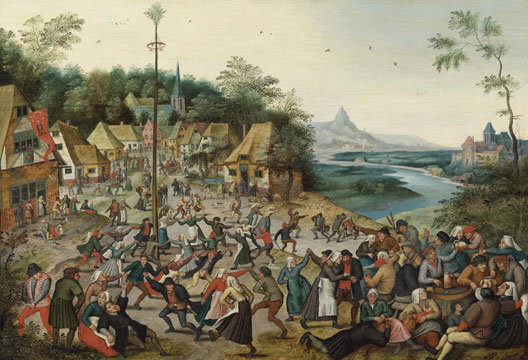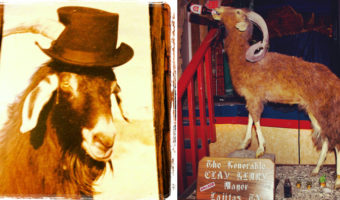15 Strange Cases of Mass Hysteria That’ll Leave You Baffled

Hysteria is a term which is used to describe people that are affected by uncontrollable excitement, fear, or anxiety. Many a time, it remains infectious causing lots of people to suffer from similar symptoms. In this post, we have covered mass hysterical events that sound very unusual and eerie. While some of them have many possible explanations for the outbreaks, most of the events remain unexplained.
1 The Dancing Plague, StrasbourgÂ
Out of numerous dancing outbreaks, a notable one struck Strasbourg, Alsace in 1518. It all began when a woman started dancing in the streets for around four to six days. Thirty-four other people had joined her within a week, making the count to four hundred in a month. Some suffered heart attacks or strokes, and many others died from sheer exhaustion. This case caused the death of around fifteen people a day. The hysteria remains unexplained.
In 1378, hundreds of people along the valley of the river Rhine were affected by a strange affliction, compulsion to dance. Groups of people began to dance frenetically until they collapsed from exhaustion. Just within weeks, this frenzied attack spread over large areas of north-eastern France and the Netherlands halting only after several months. The next notable outbreak happened in July 1518, in Strasbourg (Alsace). It started with a woman named Mrs.Troffea dancing in the streets of Strasbourg for around four to six days. She was later joined by 34 other people within a week, predominantly female. By the end of the month, 400 people were dancing. Some of the people eventually died of heart attacks, strokes, and exhaustion, killing around fifteen people a day.
Historian John Waller stated that a marathon runner could not have lasted the intense workout that these men and women did hundreds of years ago. It is reported that as the condition worsened, the concerned nobles sought the advice of local physicians. It is believed that they had ruled out astrological and supernatural instances. However, instead, they announced that it was a “natural disease†caused by “hot bloodâ€. Instead of prescribing bleeding, authorities encouraged more dancing, in part by opening two guildhalls and a grain market. They even constructed a wooden stage. To increase the effectiveness of the cure, authorities even paid for musicians.(1,2)
2 The Tulip Mania, Holland
In 1637, a tulip-specific virus called “Tulip breaking virus†caused multicolored flame-like streaks to appear on petals. Tulips that were originally a coveted luxury item, enjoyed a twenty-fold increase in price in just a month because of the rarity of petal patterns. One tulip bulb (Semper Augustus) was reportedly sold for an equivalent of $10-15 million. The “Tulipomania” was recorded as the first economic bubble.
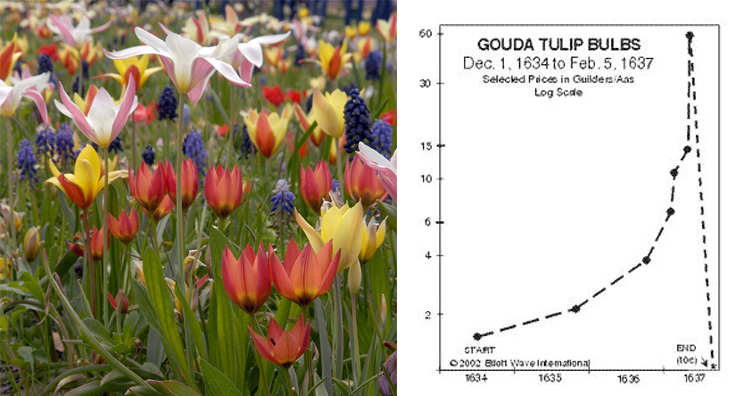
Tulips were a unique precious flower among the Dutch mainly because of the novelty, a saturated intense petal color that no other plant had. Hence, they were a coveted luxury item among people. In 1637, multicolored flame-like streaks started appearing on the petals. The color patterns came in a wide variety, increasing the rarity of an already unique flower. Thus, tulips, which were already selling at a premium, began to rise in price.
This rare theme of colors was because of a type of tulip-specific mosaic virus, known as the “Tulip breaking virus”, so called because it “breaks” the one petal color into two or more. The true bulb buyers began to fill up inventories for the growing season. The stocks were depleting quickly, increasing scarcity and demand. In no time, the prices of tulip bulbs increased so high that people started trading property, life savings, and anything else they could liquidate to get more tulip bulbs. Many Dutch people sold their hoard to hapless and unenlightened foreigners, thereby gaining enormous profits.
In just a month, overpriced tulip prices enjoyed a twenty-fold increase. The Prices increased so high that it was obvious that the rates weren’t reflecting the actual value of tulips. Prudent people realized the situation and started selling it to crystallize the profits. Soon, everyone started selling it, and there were no potential buyers. The price began to dive, causing people to panic and sell regardless of losses. Every buyer suffered a huge loss, including the ones who had started selling it initially. The tulipomania is the first economic bubble in the history of economics.(1,2)
3 The Soul Stealing Scare, ChinaÂ
In the Chekiang province (1768), people reported that their queues of hair and parts of clothing were clipped by supposed soul stealers. Buddhist monks and beggars across the country were beaten and interrogated out of fear that they might be soul stealers, trying to harness their life-energy. Even the emperor got involved and escalated the fear by ordering the bureaucratic officials to investigate it further.Â
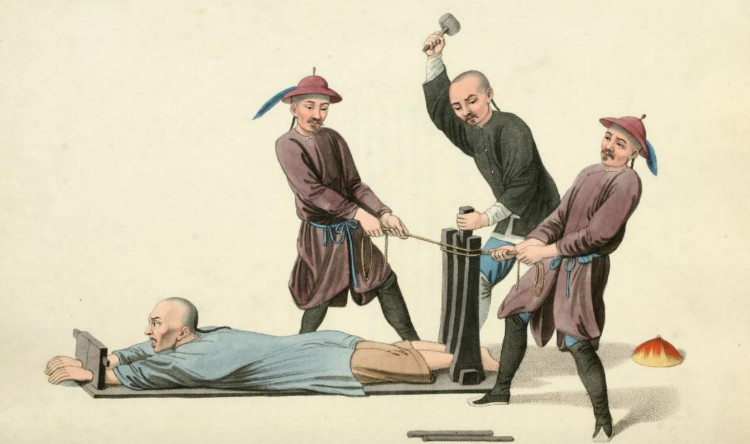
In 1768, villagers of Chekiang province reported that their queues of hair and parts of their clothing were clipped by supposed ‘soul-stealers’. It was reported that the soul stealers would speak incantations over them, thereby gaining control over their spirit. Mass hysteria occurred, as people of all levels of society were horrified. Outsiders who were suspected of this witchcraft were arrested and tortured, and some were killed. Buddhist monks and beggars across the country were beaten and interrogated out of fear that they might be soul stealers. The scare culminated as rumors spread to other provinces. Though officials in Chekiang, Shantung, and Kiangsu decided to dismiss the rumors as irrelevant, the news of sorcery eventually came to the attention of the Ch’ien-lung Emperor.
The emperor himself who was responsible for escalating the scare ordered bureaucratic officials to investigate further. The emperor was troubled by the testimonies of men who, believing their queues to have been clipped, removed the remainder of their hair, in efforts to curtail soul-stealers’ control on them. At first, the emperor had these men questioned, but soon all involved realized that claims to innocence were authentic. As the investigation advanced, many confessions previously made were recanted. The absence of evidence and the inconsistency of testimonies, together with the failure of investigators to ever identify source eventually led officials to call off prosecution efforts altogether. After nearly five months, the scare was put to an end.(1,2)
4 The Meowing And Biting Nuns, France
During middle ages, a convent of nuns began to meow like cats and others followed them until all would meow together at a certain time for several hours together. The nuns finally stopped meowing when the police of surrounding village ordered a large group of soldiers to beat them up.Â
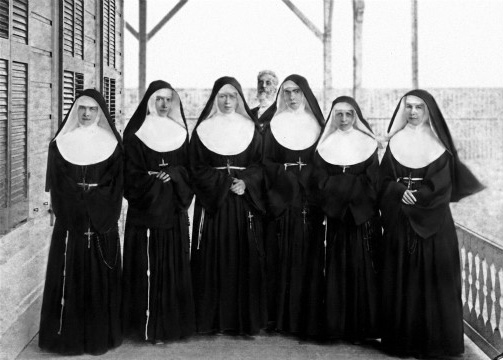
During middle ages, a nun in a large convent began meowing. Soon after some time, other nuns joined her too. At last, all the nuns meowed together every day at a certain time for several hours. The neighbors could hear the collective caterwauling and were understandably annoyed. The meowing didn’t stop until they were informed that a large group of soldiers was placed by the police before the entrance of the convent.
The soldiers were provided with rods and were ordered to beat the nuns until they promised not to meow anymore. The nuns finally stopped the odd behavior. A similar incident hit Germany when one nun in a convent started biting other sisters. Subsequently, it triggered a biting epidemic that spread to other convents and nunneries reached as far as Rome. The nuns eventually stopped biting because of exhaustion. This odd behavior was attributed to supernatural powers.(source)
5 The Cattle Killing Crisis, Xhosa
Nongqawuse, a Xhosa prophetess, reported that she had seen spirits of their ancestors (April or May 1856). It is believed that the spirits had told her that they would drive all the white settlers into a sea. But as a token of faith, the spirits wanted all of their crops and cattle to be destroyed first. This hysteria resulted in famine and death of 400,000 head of cattle. Later, Nongqawuse was arrested.
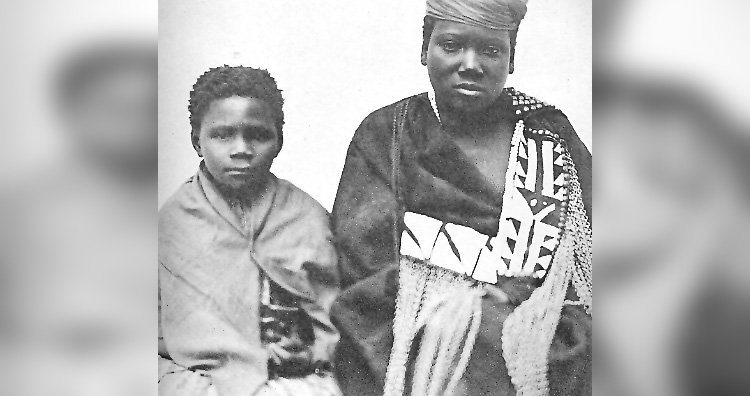
In April or May 1856, Nongqawuse went to fetch water from a pool near the mouth of the Gxarha River. When she came back, she reported that she had seen spirits of their ancestors. It is believed that the spirits had told her that they would drive all the white settlers out of the country. A huge wind would blow all the settlers into the sea. Nongqawuse claimed that before anything could happen, the spirits had told her that Xhosa people should destroy their crops and kill their cattle, the source of their wealth as well as food, as an act of faith.
Nongqawuse predicted that the ancestors’ promise would then be fulfilled on February 18, 1857, when the sun would turn red. Sarili, the Xhosa paramount chief was convinced by the prophecy and ordered the people to slaughter their cattle. Historians estimated that over a period of ten months the Xhosa clans killed around 300,000 to 400,000 head of cattle and burned all of their crops. The aftermath of the crisis was catastrophic. The population of Xhosa dropped from 105,000 to fewer than 27,000 due to the resulting famine. On 18th February 1857, the sun rose with the same color as every other day. The prophecies were not realized. Eventually, she was arrested by the British authorities and imprisoned.(1,2)














